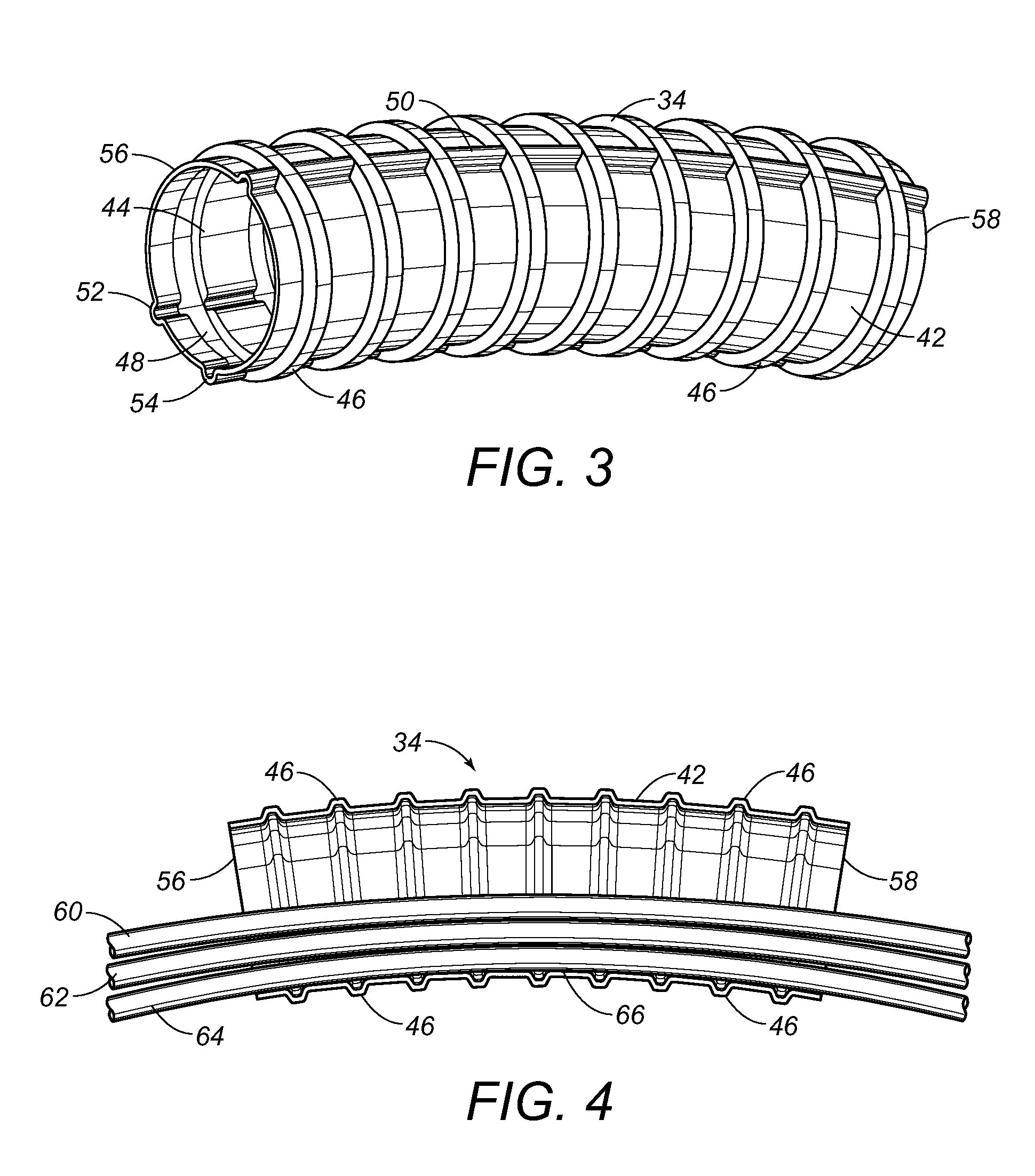Duct system for profiled post-tension construction
a technology of duct system and post-tension construction, which is applied in the field of ducts, can solve the problems of weak structural concrete, inability to carry significant tensile loads, and inability to use the full potentiality of concrete, and achieves the effect of reducing the difficulty of duct use in association with profiled load-balancing tendons
- Summary
- Abstract
- Description
- Claims
- Application Information
AI Technical Summary
Benefits of technology
Problems solved by technology
Method used
Image
Examples
Embodiment Construction
[0040]Referring to FIG. 2, there is shown the duct system 30 in accordance with the preferred embodiment of the present invention. The duct system 30 includes a first duct 32, a second duct 34, and a third duct 36. The first duct 32 is of a first polymeric material. The second duct 34 is of a second polymeric material. The third duct 36 is of a third polymeric material. The polymeric material used for the second duct 34 is more wear resistant than the polymeric materials used for the first duct 32 or the third duct 36. As can be seen, a coupler 38 is used to join one end of the second duct 34 to an end of the first duct 32. A second coupler 40 is used to join the opposite end of the second duct 34 to an end of the third duct 36. Couplers 38 and 40 can have a variety of configuration including, but not limited to, the configuration of couplers described in U.S. Pat. Nos. 5,474,335, 5,775,849 and 5,954,373 to the present inventor.
[0041]It is important to note that, with respect to the...
PUM
 Login to View More
Login to View More Abstract
Description
Claims
Application Information
 Login to View More
Login to View More - R&D
- Intellectual Property
- Life Sciences
- Materials
- Tech Scout
- Unparalleled Data Quality
- Higher Quality Content
- 60% Fewer Hallucinations
Browse by: Latest US Patents, China's latest patents, Technical Efficacy Thesaurus, Application Domain, Technology Topic, Popular Technical Reports.
© 2025 PatSnap. All rights reserved.Legal|Privacy policy|Modern Slavery Act Transparency Statement|Sitemap|About US| Contact US: help@patsnap.com



